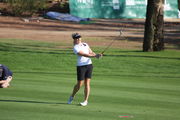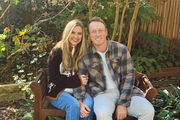
Imago
The 152nd Open Championship 2024 Phil Mickelson USA on the 8th green during Round 3 of The 152nd Open Championship 2024 Royal Troon Golf Club, Troon, Ayrshire, Scotland. 20/07/2024. Picture Thos Caffrey / Golffile.ie All photo usage must carry mandatory copyright credit Golffile Thos Caffrey Troon Royal Troon Golf Club Ayrshire Scotland Copyright: xThosxCaffreyx

Imago
The 152nd Open Championship 2024 Phil Mickelson USA on the 8th green during Round 3 of The 152nd Open Championship 2024 Royal Troon Golf Club, Troon, Ayrshire, Scotland. 20/07/2024. Picture Thos Caffrey / Golffile.ie All photo usage must carry mandatory copyright credit Golffile Thos Caffrey Troon Royal Troon Golf Club Ayrshire Scotland Copyright: xThosxCaffreyx
Phil Mickelson approaches every golf game with enthusiasm, whether it’s a major, LIV Golf event, or a regular game against non-PGA Tour golfers. Regardless of the game, he likes to take control of course setups and strategies. But even for a legend, sometimes a trick can backfire. Recently, YouTube golfer Grant Horvat shared a story about how Mickelson tried unsuccessfully to outsmart him during a friendly match.
Watch What’s Trending Now!
Grant was talking about a rematch he had after beating Phil in the first one. The venue for the rematch was Rancho Santa Fe. Most golf fans know this as Mickelson’s home course. Trying not to lose the rematch at his home club, Phil tried to set up the course, but this move backfired. “Everyone knows that I’m supposed to be putting it off the green. And Phil putts it off the green. It was the funniest thing. He did it to himself. He tricked himself. And he did it multiple times throughout the video, where he actually hurt himself,” Grant said on the Bible Caddie podcast.
Before Grant shared his story, host Ben Crane recalled a similar example of Mickelson’s love for influencing course setups. He recalled how he was playing with the 6-time major winner against some other golfers at the Madison Club in a high-stakes game. After all the negotiations, the other golfers said they wanted a two-tee start. The 45-time PGA Tour winner didn’t like this. So he went to Spencer G. Knightstep, the director of golf at the club, and flipped him some money for course setup. He asked Spencer to take every two-tee marker and put it next to every one-mark marker from hole three forward.
ADVERTISEMENT
With this, Grant started telling his own experience with the rematch. This time, the setup was even bigger as Phil was at his home club. “He calls the superintendent the night before, and he wants the greens triple rolled for the roll of 40, and he wants to set the pins. And so when I tell you these pins are ridiculous, the first hole, if you come up short, you roll 40 yards down to the bottom,” Grant said.
Episode 138 is now streaming! @GrantHorvatGolf shares his amazing story from how he went from just a guy on Youtube, to his identity as a child of God! 🙏 https://t.co/iFc2vUygZ2 pic.twitter.com/m1JAx8ZBV7
— Bible Caddie (@BibleCaddie) October 10, 2025
Built in 1927 and opened two years later, the Rancho Santa Fe Golf Club was designed by Max Behr to flow naturally with the land’s rolling contours. Its tricky slopes and unpredictable pin positions have always challenged even the best players. In this case, they can sometimes inspire a little mischief too. Knowing that, Phil decided to take things a step further. He asked the superintendent for triple rolls to set up a prank on Horvat
ADVERTISEMENT
Triple rolling increases green speed, often for a temporary period. It is common to have the greens rolled once or twice, but a triple roll is not common. However, Phil intentionally did this so that when Horvat tries to putt, his ball may roll 40 yards down the slope. This was the plan, until it wasn’t.
On the day, Grant didn’t putt at the speed he wanted, so it stayed on the green. On the contrary, it was Phil’s ball that missed the hole and went down the slope. “Phil gets up, and he has it a little bit closer than me. He hits it, and he barely misses the cup, and it trickles and it rolls down 40 yards. And he looks over at me. He’s like, ‘That was supposed to happen to you.’ And I’m like, ‘What do you mean?’ Like, ‘I’m not in on this joke. I have no idea what’s going on.’ And everybody’s in. Like, even my videographer and my manager are in on the joke,” said Horvat. This was just one of the many instances Phil had tried to control the course.
ADVERTISEMENT
In fact, Phil was accused of cheating at Torrey Pines during the 2010 Farmers Insurance Open. Scott McCarron accused him of using Ping-Eye 2 wedges that were banned. However, any Ping-Eye 2 wedge made before April 1, 1990, remained legal, which was the case. So technically, he didn’t cheat. Another time was in 2018, in the US.
During the US Open major tournament, Mickelson hit a moving ball to prevent it from going off the green. He knew it was a two-shot penalty, but he did it anyway. He even admitted to his fault later by saying, “I made a big mistake [at the U.S. Open] and I wish I could take it back, but I can’t.”
It is not uncommon to see the competitive streak in golfers often extend beyond the Tour. In recent years, several professional golfers, including Mickelson, have joined YouTubers like Grant Horvat, Good Good, and Rick Shiels for matches that blur the line between entertainment and elite golf.
ADVERTISEMENT
Top Stories
Scottie Scheffler Makes Critical Health Announcement After He Ended PGA Tour Hiatus

Tiger Woods & Co. Now Have to Think Twice Before Trash-Talking at TGL Following New Update

Charley Hull’s Silent Fight During Divorce Ordeal Comes to Light: ‘Went Through a Lot’

Lexi Thompson Branded ‘Self-Centered’ After Retirement Decision Led to Chaos & Confusion

What Happened to Golf Creator Brad Dalke’s Wife? Health Update Revealed

Professional golfers playing YouTube matches
Phil Mickelson’s playful YouTube match was more than just a regular game. It was part of a growing trend where professional golfers are stepping into the digital space to connect with fans in a new way. Many others have also followed suit.
In one popular YouTube video, GM Golf took on Marissa Wenzler and Alexis Miestowski. Both players are professionals with rookie status on the Epson Tour. The 18-hole match featured both skill and humor, with one player caddying while the other competed. Another standout example came from Peter Finch.
ADVERTISEMENT
Finch faced six PGA TOUR stars, Justin Thomas, Ludvig Āberg, Adam Scott, Patrick Cantlay, Robert MacIntyre, and Aaron Rai, in a series of skill challenges and match play contests. Shot in Connecticut and sponsored by Titleist, the event combined the precision of professional golf with the accessibility of YouTube storytelling.
Be it Phil Mickelson or anyone else, these collaborations have been changing how fans experience the sport. They mix authentic competition with personality-driven content. Today, influence in golf isn’t measured only by trophies, but by how players connect beyond the fairway.
ADVERTISEMENT
ADVERTISEMENT
ADVERTISEMENT

